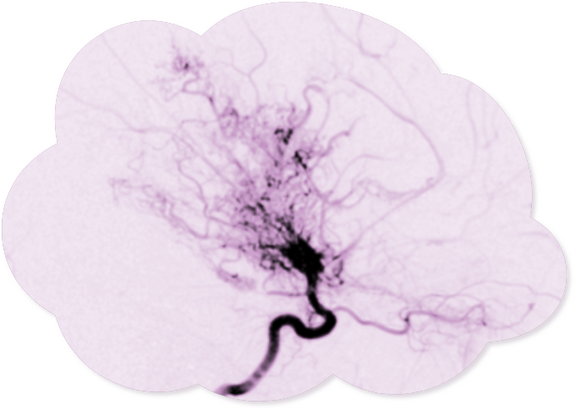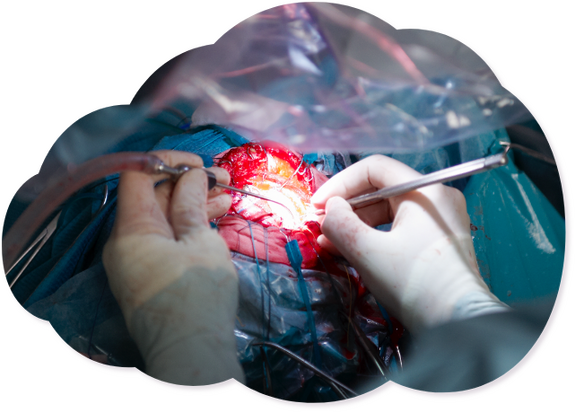From the Initial Consultation to the Road to Recovery:
we accompany our patients personally and with a deep commitment
Moyamoya angiopathy is a neurological disorder in which brain arteries narrow and close. Patients develop symptoms because their brain has less blood flow: These include, dizziness, headaches or short-lasting sensory-motor disturbances. These transient and self-recovering symptoms are called TIA: transient ischemic attacks. Repeated strokes are also typical, and epileptic seizures may also occur. Only in rare cases does cerebral hemorrhage occur.
Symptoms
Your child complains of dizziness, headaches or no longer feels certain parts of the body. Epileptic seizures may also occur. Stroke.
Diagnosis
The first step is usually an intensive evaluation by a pediatric neurologist. The patient's brain is scanned with MRI and blood flow is measured with a PET scan. This is followed by an in-depth examination of the brain arteries with an angiogram.
Natural Compensation
The brain tries to compensate for the disturbed circulation by developing fragile and small arterial collaterals. In reference to the shape of these bypassing circuits, the Japanese neurosurgeons J. Takeuchi and K. Shimizu, who first described the symptom in 1957, named the disease Moyamoya - Japanese for "little cloud" or "puff of smoke".
In-depth examinations
Additional neurological and developmental pediatric evaluations are needed to plan surgical intervention.
Good Chances Of Recovery
Children are more likely to have moyamoya than adults. Up to the age of five and especially those <2 years of age are considered high-risk patients because their disease progresses rapidly. Therefore early diagnosis and treatment are indicated. On average, patients at the Moyamoya Center are six years old. If the disease is not detected, it can lead to severe disabilities or even death. However, with early diagnosis and treatment, the chances of recovery for moyamoya patients are good.
Surgical Interventions
Depending on the severity of the disease, one to three surgical sessions are necessary, each lasting four to eight hours. In this surgery the blood flow to the brain is enabled by performing a bypass circuit constructed from the patient's scalp vessels and cortical arteries lying on the surface of the brain (resvacularization surgery).
Follow-up Examinations
Without complications, the first check-up takes place one year after the surgical procedure. A clinical examination and imaging tests are part of the program. Until puberty, further check-ups are made every one to three years, depending on the medical history.
Recovery
Moyamoya angiopathy usually stabilizes in children during puberty and does not carry into adulthood. After that, a healthy, symptom-free life is possible.
Related Angiopathies
PHACE-S syndrome and ACTA2 gene mutation are other cerebral angiopathies which may occur separately or in combination with Moyamoya angiopathy. These related angiopathies are also diagnosed and treated at the Moyamoya Center:
The rare PHACE syndrome should be considered in children with facial hemangioma (hematoma, strawberry patch). The syndrome includes brain malformations in the posterior fossa, facial hemangioma, anatomic anomalies of systemic arteries (including cerebral arteries and aorta), and ocular anomalies. Sometimes, sternal anomalies also occur. Diagnosis and treatment are interdisciplinary due to the organ systems involved. Once the cerebral arteries are narrowed, the risk of stroke increases. These patients require careful evaluation to determine if revascularization in the brain is necessary.
The ACTA2 gene mutation occurs in a gene responsible for the structural protein actin. Actin is essential for the so-called smooth muscles of the body. When this specific ACTA2 gene is mutated, it causes a change in all organs that have smooth muscle cells (arteries of the brain, heart, lungs, aorta, urinary bladder, gastrointestinal tract, pupil function, etc.). The arteries can either dilate or constrict abnormally due to an ACTA2 gene mutation. If the narrowing affects the cerebral arteries, the risk of stroke increases. Because of the clinical picture, careful interdisciplinary evaluation is recommended for ACTA2 patients. This will clarify whether revascularization in the brain is necessary.


